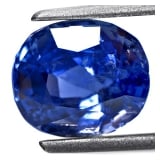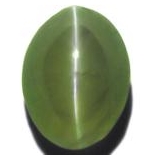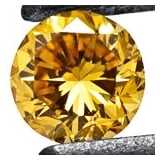Cutting Process of Gemstones
Factors to consider when cutting a gemstone
Before cutting of any gemstone can commence, there are various factors one must consider. Most gemstones are very expensive and hence they have to be cut very carefully by skilled craftsmen. Although the type of cut determines a lot of what is to be examined in the rough, there are a few points which must be considered irrespective of the type of cutting:
Weight Retention – As is the case with most of the gemstones, a higher weight of finished product implies a higher price since most gemstones are priced per carat, hence as the number of carats increase, the final value of the finished product also increases. It must be noted that this increase is not linear. For example, a ruby over three carats has much more value than a ruby of one carat weight, but a ruby weighing one carat and a ruby weighing half a carat have nearly the same price per carat. The amount of weight that is to be retained also depends on the stone. In case of ruby, sapphire and emeralds one has to take a greater care in retaining the weight as it can have a dramatic impact on the price, but one can be less careful for an Almandite garnet for that case. The average weight loss for a gemstone is around 55% to 75% of the original weight. Factors affecting weight loss can be listed as follows –
a) Shape – the shape that the cutter chooses largely determines the weight of the final product. The shape is the most major factor which affects the weight of gemstone.
b) Calibration – Any gemstone which is intended for mass manufacturing and setting in jewelry is often cut in calibration i.e. Ovals are cut as 5mm x 3mm, 6mm x 4mm etc. Cutting in this way encompasses easy setting in jewelry. Calibrated cuts lead to higher weight loss, but sell for a higher price to compensate for the weight loss.
c) Brilliance – In case of faceted stone, maximum brilliance is observed only when the cutter cuts the gemstone in such a way that a maximum amount of light should enter the gemstone and strike the pavilion facets at an angle greater than the critical angle and also that the rays reflected back from the pavilion facets meet the crown facets at an angle less than the critical angle.
Position of Inclusions – In many cases, the position of inclusion has a great impact on the weight of the stone. An inclusion which can be seen from the table of the stone is generally less desirable and hence the stone has to be cut in such a way which reduces the visibility of the inclusion; however such a direction of cutting can sometimes reduce the weight of the finished product. Often weight loss is caused when such an inclusion is removed by grinding it.

It is important to make sure that any inclusions that the stone might have are least visible when viewed from the table (top) to ensure maximum brilliance. For example, this Burmese sapphire is cut in such a way that the feather inclusions are situated at the top right-hand side which allows the stone to have superior lustre.
Optical Phenomenon – Some stones such as ruby, sapphire, chrysoberyl etc. show optical effects, but such an effect can be seen maximally only when cut in certain direction. However, such a direction may not necessarily produce a higher weight of the polished stone. In such cases, the optical effect is considered over the weight of the stone.

Optical Effects such as Asterism, Chatoyance, Opalescence, etc must be taken into account. Such gemstones are normally cut en-cabochon in such a way that the phenomenon is properly displayed. For example, in this Chrysoberyl Cat's Eye, the cutter has made sure that the Chatoyance is centered.
Cleavage Planes – Since polish is generally difficult to attain parallel to cleavage planes, one has to orient the stone so that this is avoided.
Colour – The colour is a major parameter playing part in the value of the stone. Every effort needs to be made so that the stone is cut so as to show the maximum and most desirable colour through the table facet. In case of pleochroic stones, one of the colours may be less desirable than the other. This has to be considered while cutting the stone.

In rare gems like Fancy Color Diamond, it is extremely important that the color appears uniform throughout the stone.










